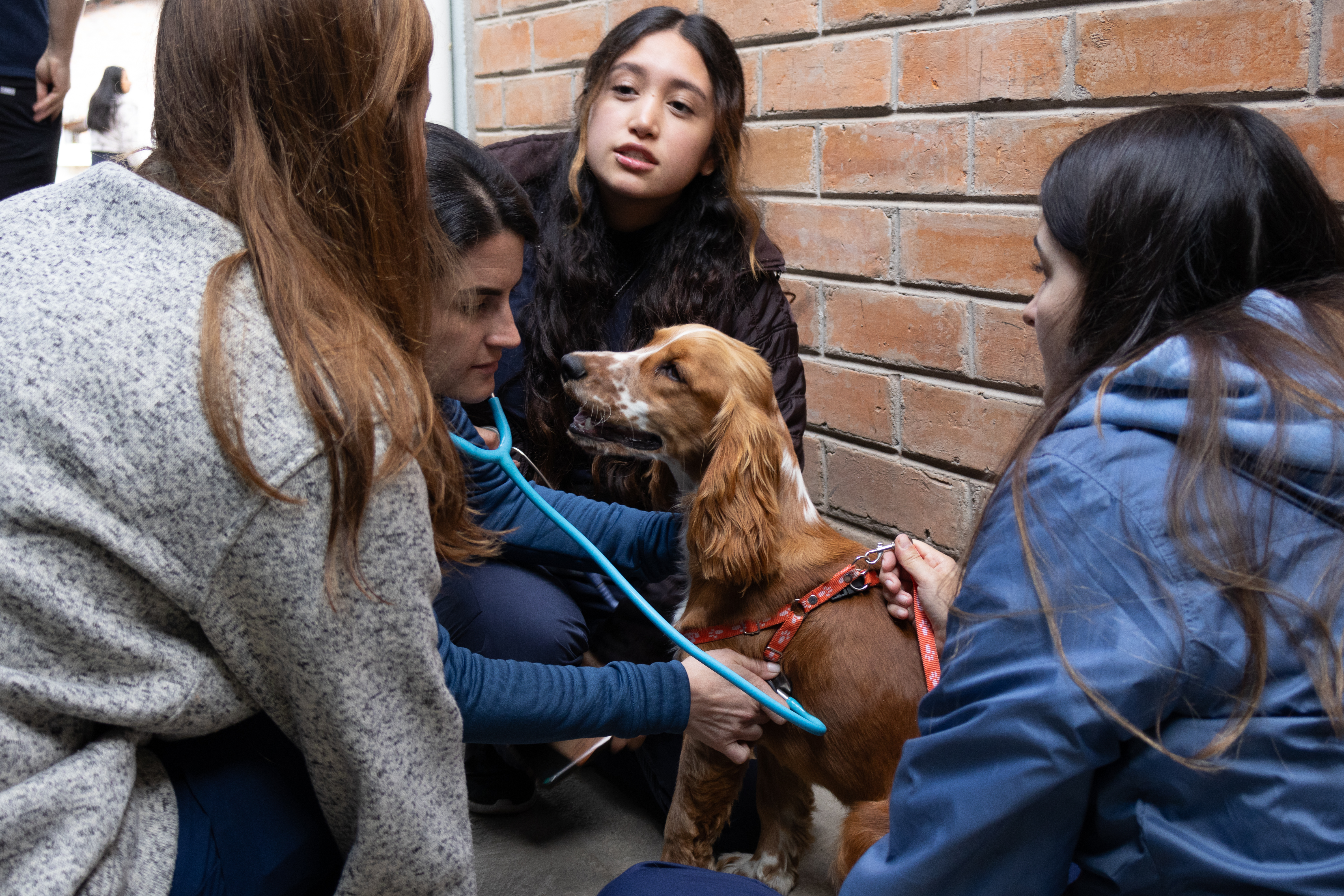VIDEO: Meet the small animal veterinarians helping wildlife around the world
United Nations World Wildlife Day, celebrated annually on March 3, honors the diversity of wildlife and aims to connect people with the natural world. Several wildlife veterinary organizations are doing incredible conservation work by keeping endangered and threatened species healthy. Meanwhile, small animal veterinarians are collaborating with local communities to protect wild animals by serving the dogs and cats who live alongside them. Keep reading to find out more and learn how you can participate.
Saving endangered species by helping domestic animals in the Galapagos islands
The Galapagos archipelago is one of the most protected areas in the world, with the Galapagos National Park taking up 97% of its land area. But a significant increase in the human population has led to an influx of companion animals, including cats, which are a threat to a host of species of animals including birds and iguanas, and their eggs.
Foreign species can threaten the native wild populations with a higher risk of infectious diseases like distemper and parvovirus—as well as the danger they pose as hunters of wildlife and competitors for natural resources.
In 2010, Tod Emko founded Darwin Animal Doctors (DAD), an American-based nonprofit that works with local communities. Their twofold goal is:
- to maintain biodiversity by humanely limiting the number of domestic animals in the Galapagos Islands, and
- to ensure that companion animals and wildlife have proper veterinary care to give the precious ecosystems a chance.
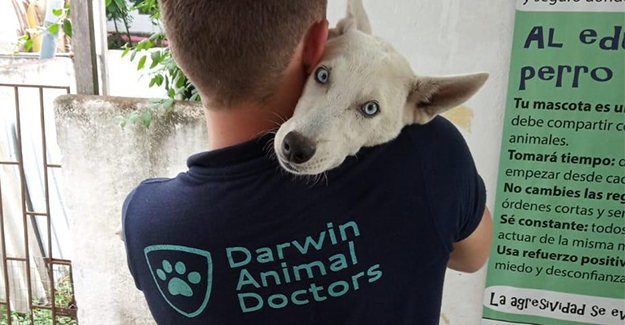
One of Darwin Animal Doctor's veterinary campaign volunteers, lovingly holding and keeping warm one of the many dogs treated at their Galapagos clinic during summer campaign season. Credit DAD
For several years, DAD ran a clinic in Puerto Ayora, on the island of Santa Cruz, the most heavily populated of the archipelago. Visiting volunteer veterinarians helped with spay and neutering, cared for sick and neglected animals, and educated residents about proper pet care.
“A lot of small animal veterinarians may think they can’t help a UNESCO site because they may not have wildlife experience,” said Emko. “However, vulnerable ecosystems definitely need their help. Whether you’re in a wildlife refuge in Sumatra, Kenya, or the Galapagos, all of these areas are populated by adjacent communities whose longevity is tied to the ecosystem.”
Over the years, DAD has treated thousands of animals, while preventing several unwanted litters from being born and negatively impacting local wildlife.
“Spaying and neutering of cats and dogs reduces domestic animals’ predation on wildlife,” Emko said. The nonprofit also provided parasite treatment and disease testing because “vaccinating and deworming domestic animals helps prevent wildlife from catching deadly invasive diseases,” he added.
DAD also educated residents on the importance of good animal care such as cleaning up animal waste and feeding them proper food instead of letting them eat wildlife—two things that can make a huge impact on wild populations.
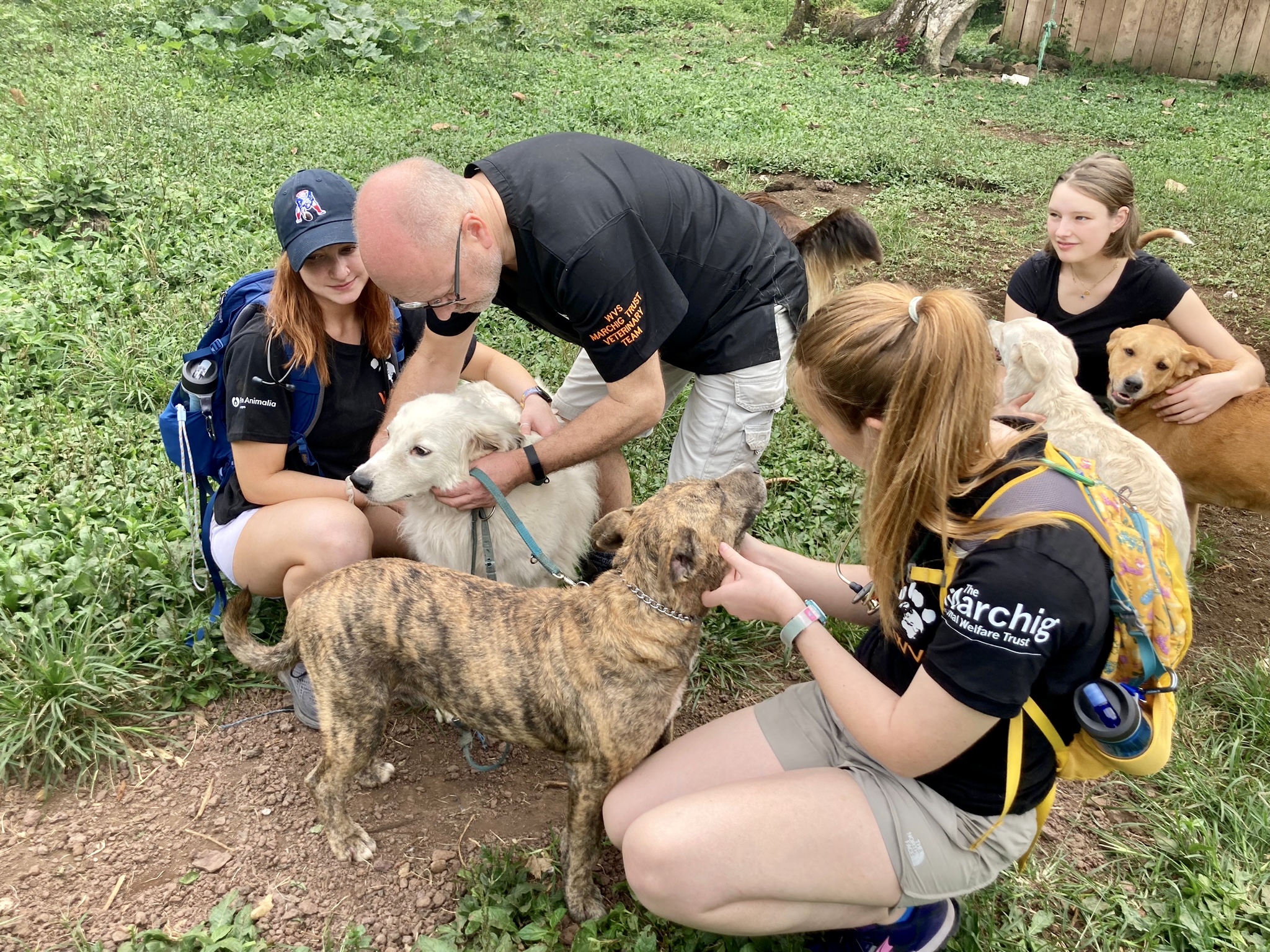
World Veterinary Service/Galapagos Animal Doctors volunteer group in the Galapagos Islands examining animals. Credit: Isabel Correia
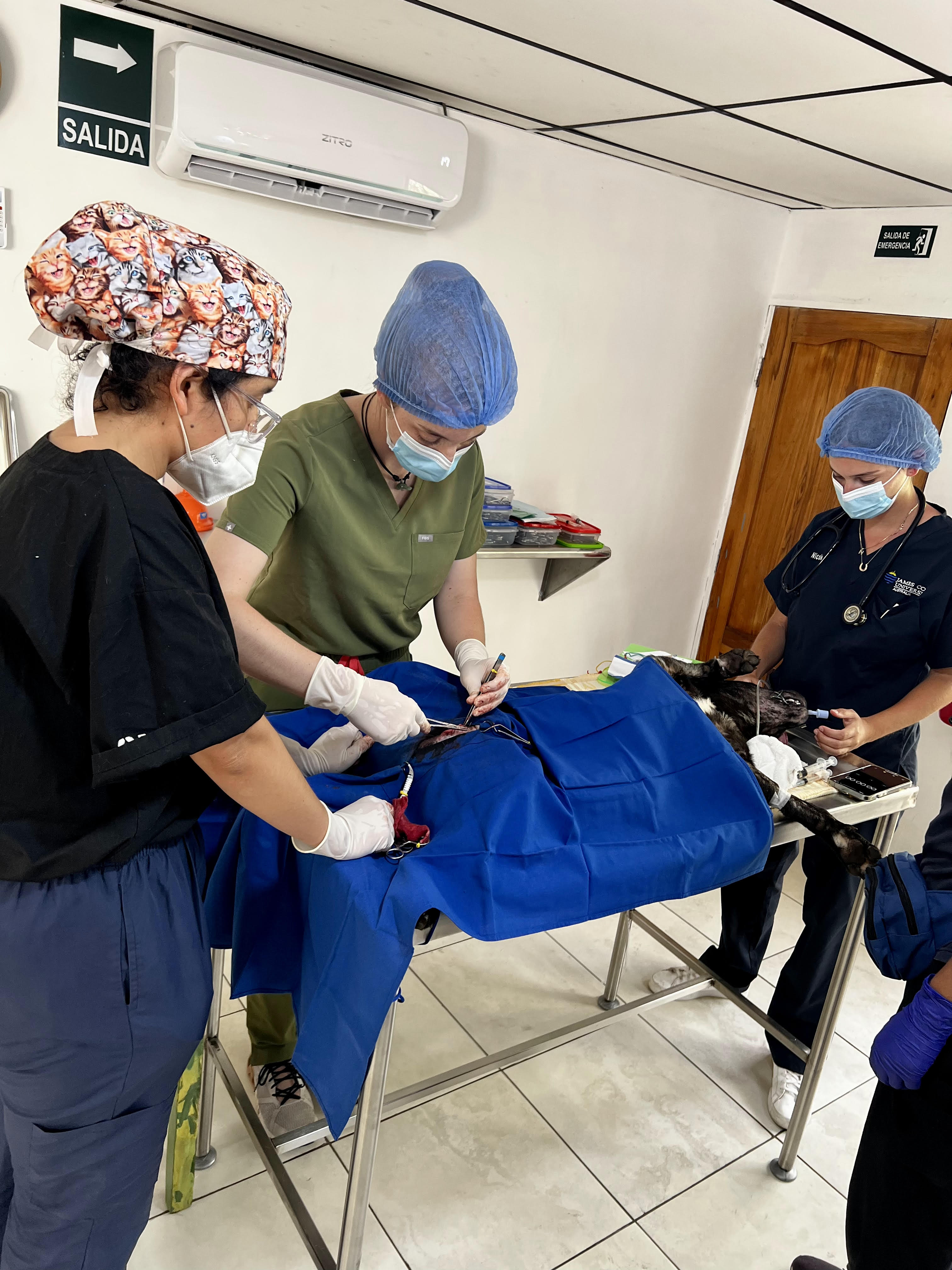
World Veterinary Service/Galapagos Animal Doctors volunteer group in the Galapagos Islands conducting spay/neuter surgery. Credit: Isabel Correia
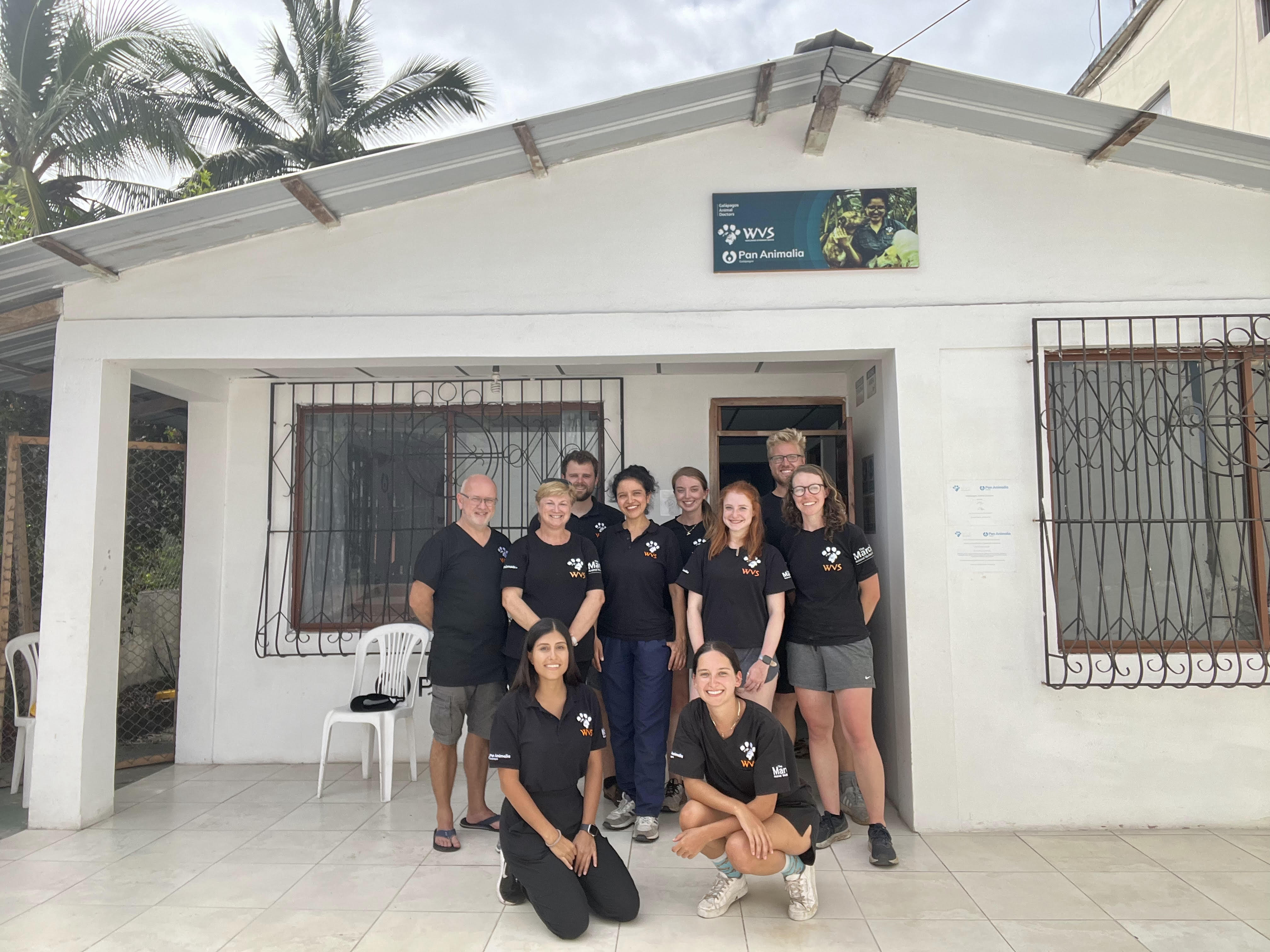
World Veterinary Service/Galapagos Animal Doctors volunteer group in the Galapagos Islands at their clinic on Santa Cruz. Credit: Isabel Correia
Expanding beyond the Galapagos
After eight years, DAD closed the clinic. “Our goal was always to build up the locals, never to permanently make them dependent upon foreign aid or volunteers. We always try to train and be trained by local vets, so that locals always see people who look like them do the scientific and veterinary conservation work,” Emko said.
Ben Howitt, BVSc, a veterinarian from the United Kingdom who was the chief veterinarian for DAD towards the end, founded a new project called Galapagos Animal Doctors (Pan Animalia Galápagos) (GAD) under Worldwide Veterinary Service (WVS), a UK-based nonprofit.
He currently serves as Director of South America for WVS, and the fully equipped location in the Galapagos now has three Ecuadorian veterinarians and a full-time nurse. They are providing basic services and helping curb infectious diseases that threaten wildlife.
WVS currently has five centers around the world—with locations in Malawi, Thailand, and the Galapagos, along with two in India—that provide a “host of community engagements, providing assistance, and welfare and health programs for the community and the animals in their environment,” according to Howitt.
One of the fundamentals of WVS is providing surgical training to veterinary students around the world. The task force element of WVS performs volunteer-run projects, interventions, and short-term teaching engagements in several countries. WVS also provides scholarships and training for veterinary students.
Through this critical work, WVS has trained 9,400 veterinarians and helped treat over 600,000 animals since opening in 2003.
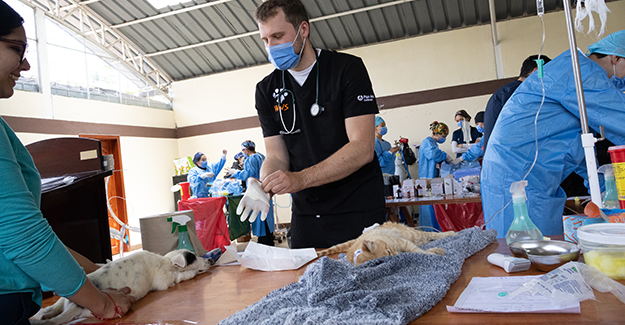
World Veterinary Service veterinarian with Ecuadorian students on a sterilization campaign in the Andes. Credit WVS
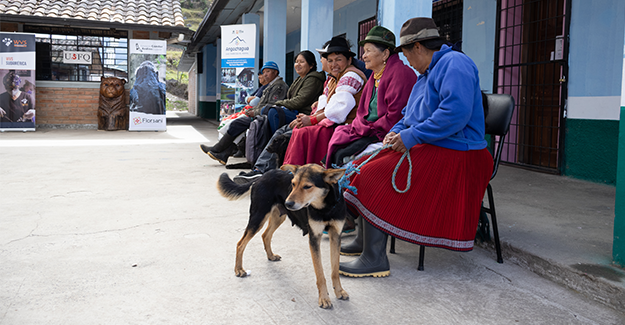
Community members from the rural Angochagua parroquia in Ecuador. Credit WVS
Veterinarian conducting a presurgical clinical exam with students. Credit WVS
Mission Rabies Project
Another key goal of WVS is the elimination of rabies. “Ninety-nine percent of rabies cases in humans are canine-mediated. There is this huge public health concern between wildlife and reservoirs of rabies in domesticated dogs,” shares Howitt.
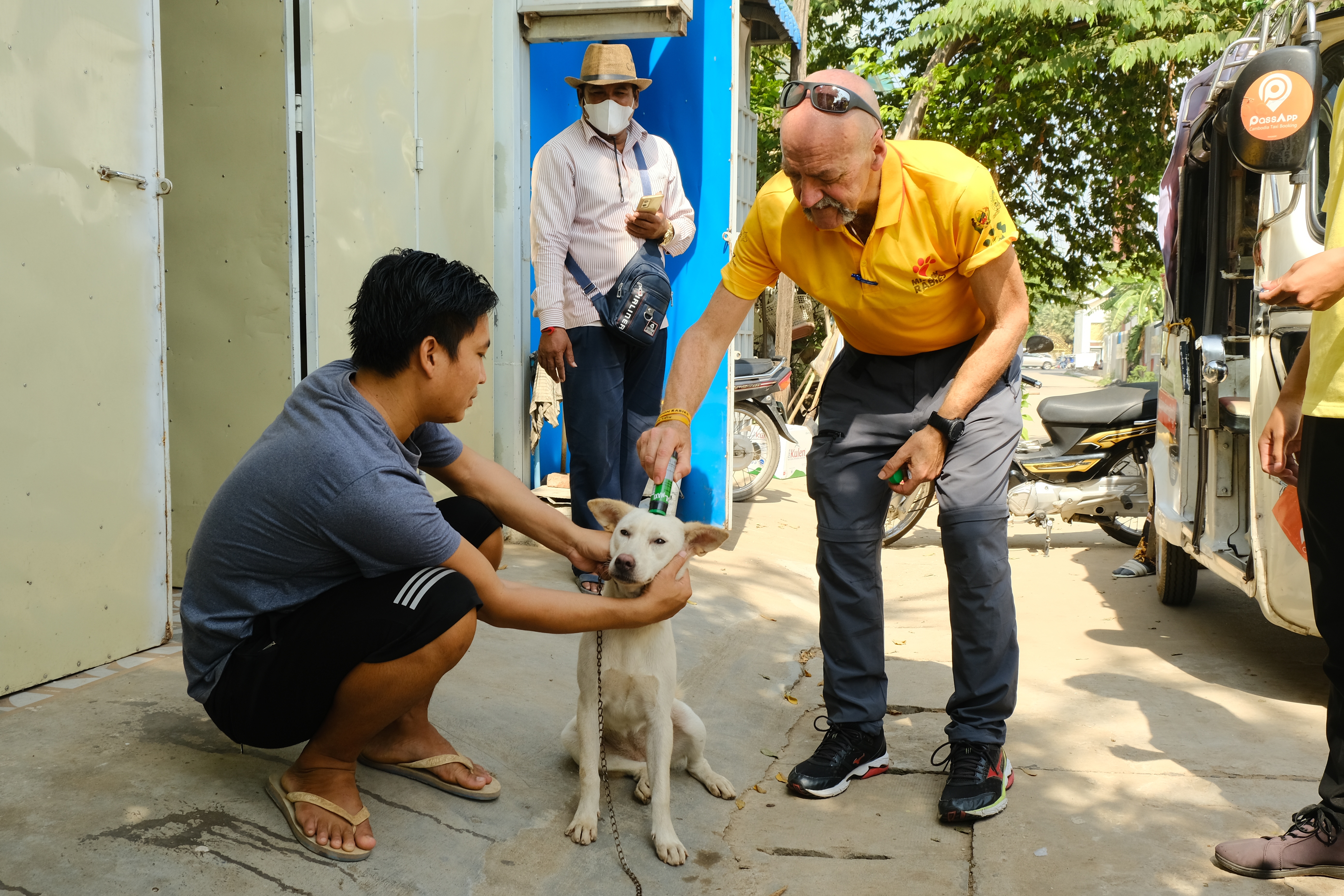
Veterinarian marking a rabies-vaccinated dog with a short-term green colored paint. Credit WVS
The Mission Rabies project has vaccinated more than 2 million dogs against rabies in India, Malawi, Cambodia, and other countries since 2013, and educated over 7 million children in ways to protect themselves from rabies.
In Arusha, Tanzania, DAD partner Urban Tails is run by founder Ismael Mungaya who operates a shelter in his parents’ backyard, helping to save countless domesticated and other small animals. With DAD’s assistance, Mungaya works with a local veterinarian, Lawrence Mchaki, who provides basic care and educational outreach.
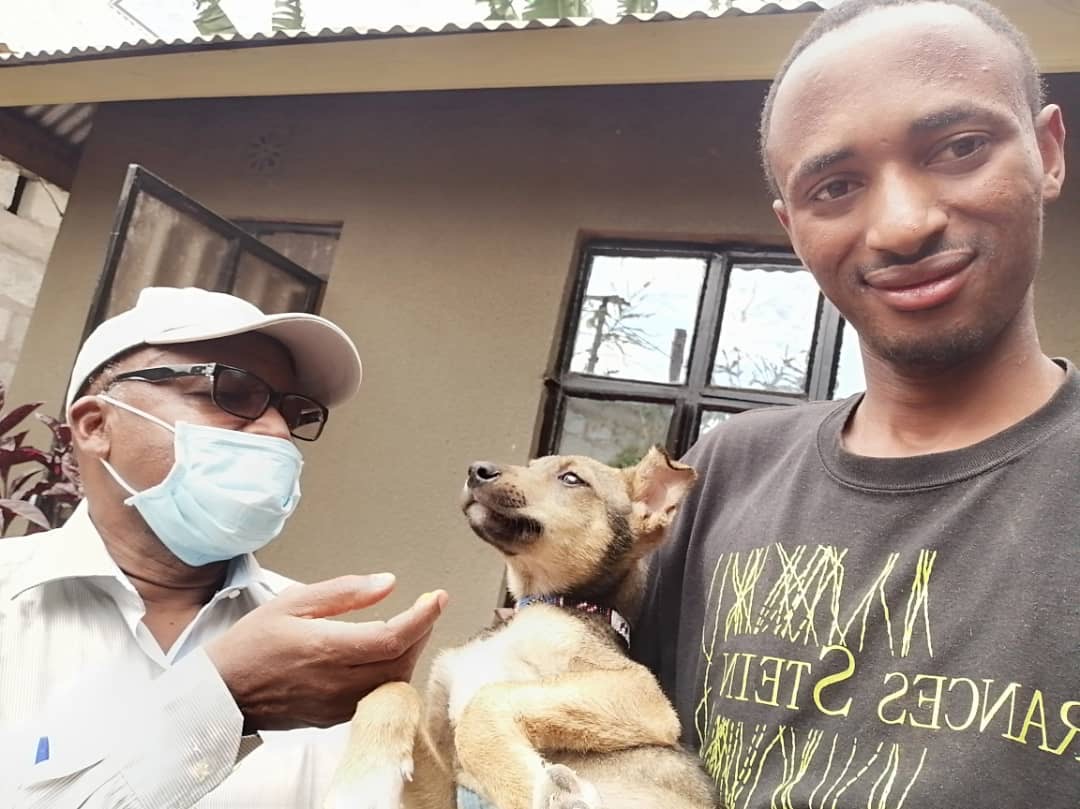
Ismael Mungaya, founder of Darwin Animal Doctor partner organization Urban Tails, with veterinarian Lawrence Mchaki in Tanzania. Credit: DAD
“The vet teaches adopters and local volunteers how to properly take care of their dogs and cats, and how to do simple things like deworm their companion animals,” shares Emko. “Not only does this help stop potential environmental destruction, but it reduces other tragedies like unleashed dogs hit by cars.”
Starting early in veterinary school
WVS works with the University of Tennessee to involve the next generation of veterinarians in this crucial work. Isabel Correia, a WVS Student Representative and DVM-MPH candidate from the College of Veterinary Medicine at the University of Tennessee (Class of 2025), volunteered with GAD in January 2023 as part of her Applied One Health elective course. She was part of a team of five students and two veterinarians tasked with sterilizing dogs and cats to reduce the burden of domestic species on the ecosystem.
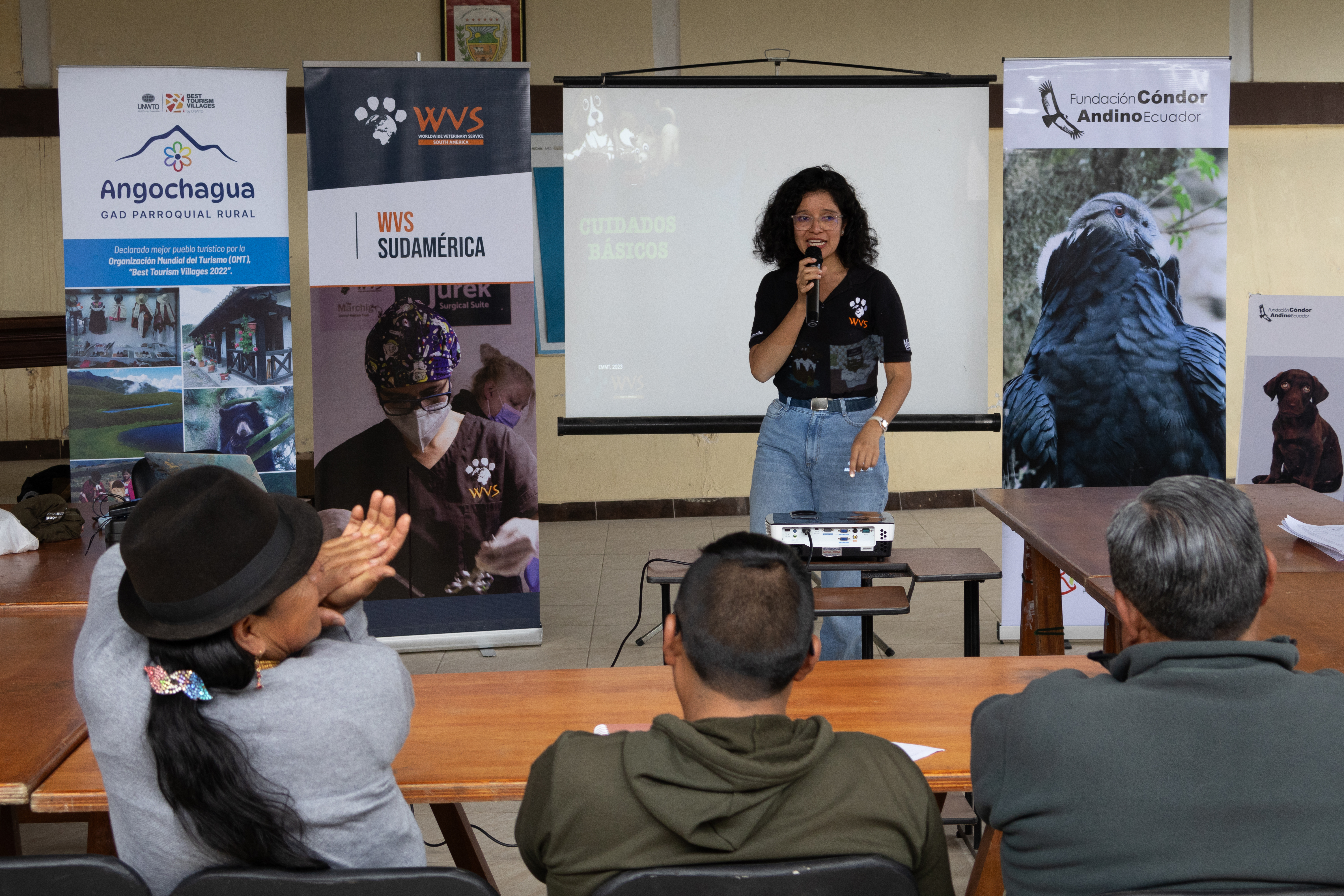
Lead surgeon at World Veterinary Service South America Dra. Erika Medrano conducts community talks on animal health, welfare, owner responsibility, and what to expect from upcoming surgical campaigns. Credit: WVS
“While I only worked with domestic species and not directly with the wildlife, it was clear how important it is to include dogs and cats in a One Health approach to wildlife conservation,” she notes. One Health is an integrated method of balancing and optimizing the health and wellbeing of humans, animals, and their environments in a sustainable manner.
When Dr. Lorelei Wakefield, DAD Veterinary Advisor, was in veterinary school, she volunteered with HSUS-RAVS (Humane Society of the United States Rural Area Veterinary Services) on a few reservations in South Dakota.
“Those were mostly working on small animals but, in those parts, that in turn helps local wildlife as they are more likely to interact,” she notes.
The volunteer veterinary teams of RAVS have treated more than 170,000 animals at no cost to the clients or communities they serve. Field training programs provide fantastic learning opportunities for professionals as well as veterinary and vet tech students. RVAS is seeking volunteers.
How to get involved
Volunteering with organizations like WVS and DAD is one way to help wildlife. However, Correia says veterinarians don’t have to travel around the world to make an impact on conservation.
“One of the best things we can do as veterinary professionals is to educate and be leaders in our community. Responsible pet ownership is incredibly important, no matter what part of the world you live in, as it impacts wildlife as well as public health.”
This can be achieved through knowledge-building webinars and providing client communication here and abroad. DAD receives many inquiries from remote communities in the countries where they have established programs (Tanzania, Brazil, and Indonesia) about veterinary care related to what to do when their animals get injured or catch diseases.
“We can encourage vaccination and provide educational materials about transmissible diseases, from domestic animals to wildlife and vice versa,” shares Emko.
Dr. Adrienne Breaux, of Dublin Veterinary Hospital in Pennsylvania, works with the US Fish and Wildlife Service, Pocono Wildlife, and Pennsylvania Bat Rescue. She recommends contacting local organizations and rehabbers (or places you’d be interested in helping) and letting them know your comfort level. “I’d say, if another vet is doing wildlife work that interests you, reach out and offer to help in exchange for learning from them.”
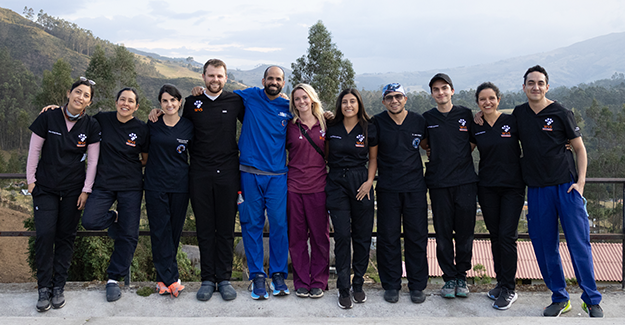
Dr. Ben Howitt and volunteer vets on the Angochagua Campaign, Ecuador. Credit: WVS
But if your heart is set on helping and training veterinarians in other parts of the world, WVS has plenty of volunteer opportunities, including upcoming campaigns in the Andes and Cambodia. There is a set fee that covers travel and the rest goes back into the project.
“They come down for a week, or two weeks, depending on what the project is, and join our team,” shares Dr. Howitt. “We are a working charity and our focus is delivering on our objectives and maximizing its impacts. So volunteers should be aware that these trips are often adventurous ones, hands-on, and fully immersed in the environment to help us deliver!”
Volunteers are also welcome to go to WVS centers in Malawi, Thailand, and India, or spend time at partner clinics in Africa, South America, the Caribbean, and Romania, among others.
No matter how veterinarians and students choose to get involved, they are guaranteed to come away with a better understanding of conservation work and what is happening in vulnerable places— knowledge which they can then spread to other veterinarians.
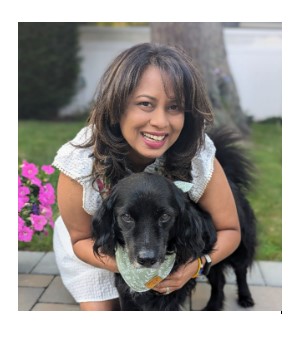
Lavanya Sunkara is a NYC-based writer and a doting pet mom. Her pet-related work has appeared in AAHA's Trends magazine, Reader's Digest, Great Pet Care, The Dodo and BarkPost, among others. She enjoys going on hikes and road trips with her adopted dogs and husband.
Photos courtesy of Darwin Animal Doctors and Worldwide Veterinary Service
Disclaimer: The views expressed, and topics discussed, in any NEWStat column or article are intended to inform, educate, or entertain, and do not represent an official position by the American Animal Hospital Association (AAHA) or its Board of Directors.




